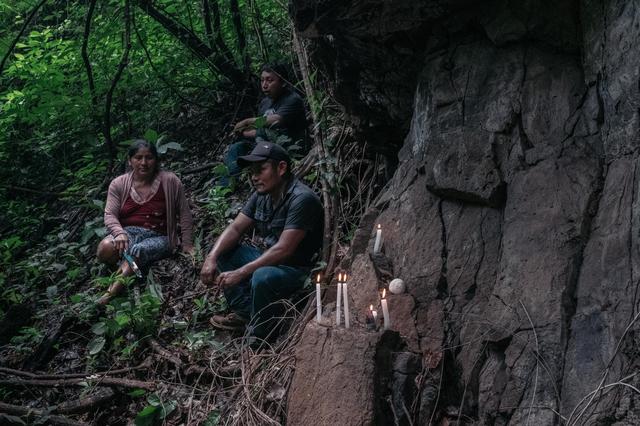In El Salvador, the ghosts of the unpunished massacre of El Mozote<
“I freed myself from the bodies covering me and saw my mother. Dead. And the little one. Agonizing. Fidel Perez's voice is choking. He stays there, sitting against the damp rock, two long minutes in silence, then apologizes: “It's always hard to talk about it. “He has so often told it, this horror scene… He, 7 years old, hidden in a cave in Cerro Ortiz with his parents, his little brother and his sister born a few days earlier, as well as fifteen other people; the soldier who surprises them, unpins his grenade and throws it at them. After that, the black hole, for hours. “When we woke up, my father, my brother and I were covered in blood. There was nothing left for my little sister to do. My father took us by the hand, and we fled. »
Fidel Perez is now 47 years old. He is one of the survivors of the El Mozote massacre, the deadliest in recent Latin American history, forty years ago, between December 11 and 13, 1981: 988 people murdered, including 558 children, in this village lost in the Salvadoran jungle, 200 km northeast of the capital. A report called to evolve according to the exhumations and the difficult identification of corpses.
Four decades have passed, and the massacre has gone unpunished, like all those suffered by El Salvador during the armed conflict which claimed 75,000 lives between 1979 and 1992. Five years ago, however, a judge, Jorge Guzman, reopened the 'investigation. Bravely, he dared to take on the powerful, prosecuted high-ranking brass, conducted hearings, gave survivors hope for a trial, which should have started before the end of 2021. That was counting without the power of the army, in this country of 6 million inhabitants governed for more than half a century (1931-1982) by the military. No one, to date, has been convicted for the events at El Mozote. And no one should be for years…
Read also: Article reserved for our subscribers Salvador: the mysteries of the "massacre" of El MozoteThose androids on Raised By Wolves have some impressive tech but seem to forgotten how to build a chimney. Those yu… https://t.co/gVljAWSc9g
— rooting for the nameless gorn Sun Nov 22 21:09:22 +0000 2020

To properly measure the weight of this past, we must place ourselves in the context of 1981. At the time, the civil war pitted the Salvadoran armed forces against the Farabundo Marti National Liberation Front (FMLN), a guerrilla group born a year earlier. of the merger of five left-wing rebel groups fighting against the dictatorship since the beginning of the 1970s. In January 1981, the FMLN launched an offensive against the civilian-military junta in power. The fighting intensifies in the department of Morazan (north), on the border with Honduras. In December of the same year, the army decided to release the guerrillas entrenched in the jungle of this mountainous region. The United States favors the annihilation of the rebel movement. Republican Ronald Reagan has just arrived at the White House, and fears that El Salvador will become a new Nicaragua, where left-wing Sandinista forces took power in 1979. Washington trains, arms, finances the Salvadoran army, in particular the Atlacatl rapid reaction infantry battalion, an elite unit trained in counter-insurgency by the Americans. Brand new M16 assault rifles, equipment, helmets… nothing is missing.
You have 86.59% of this article left to read. The following is for subscribers only.


 Tags:
Tags: Prev
Prev







